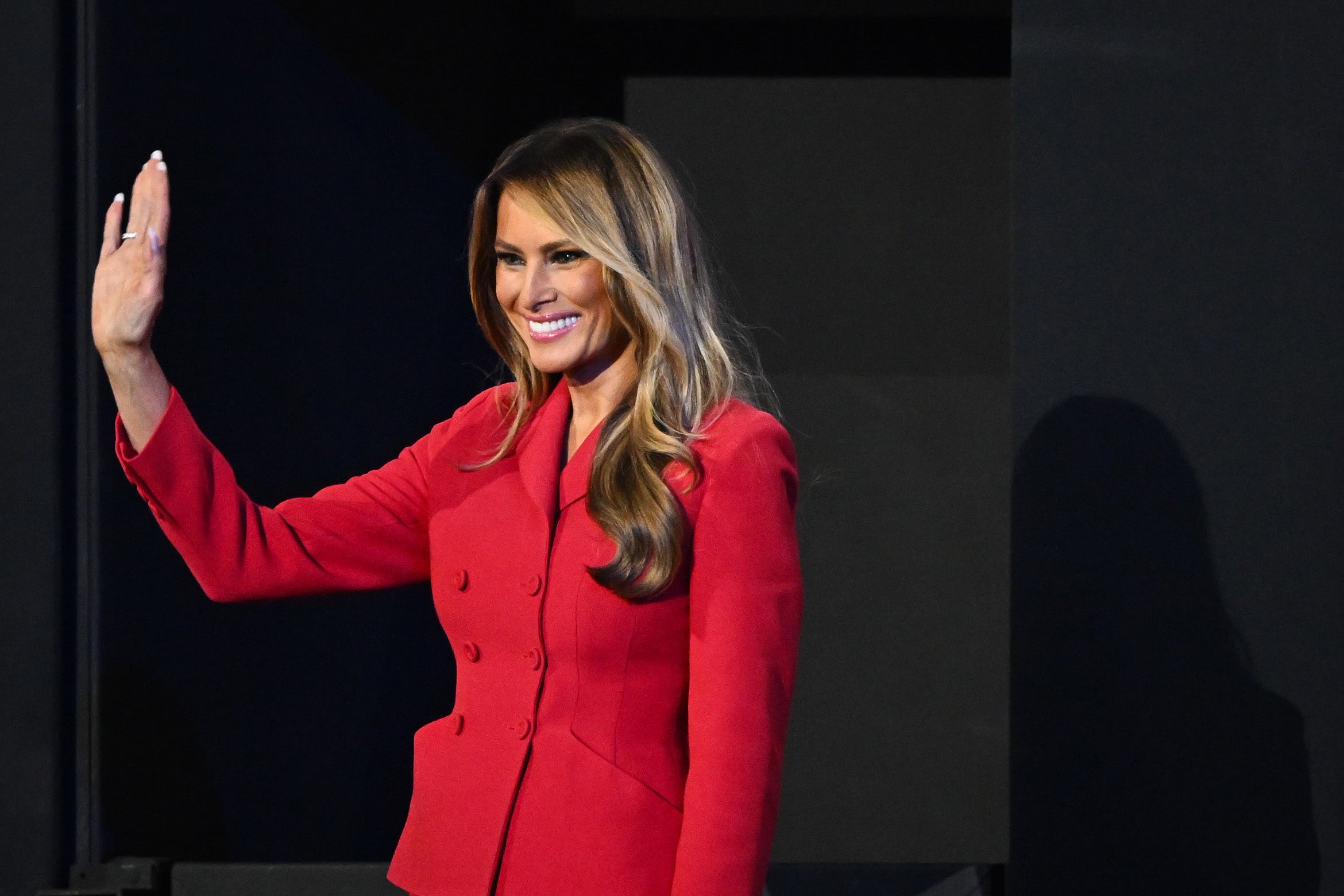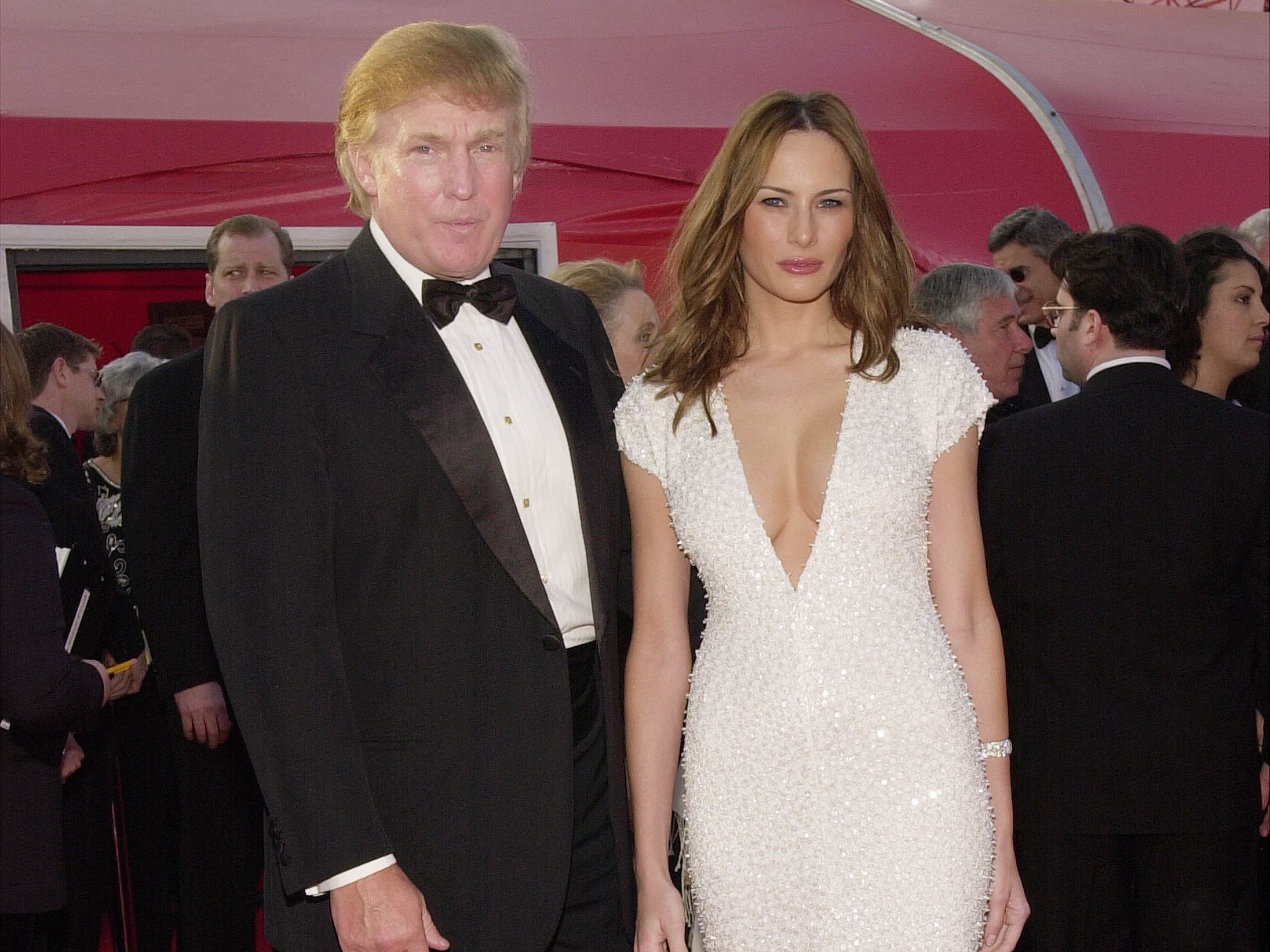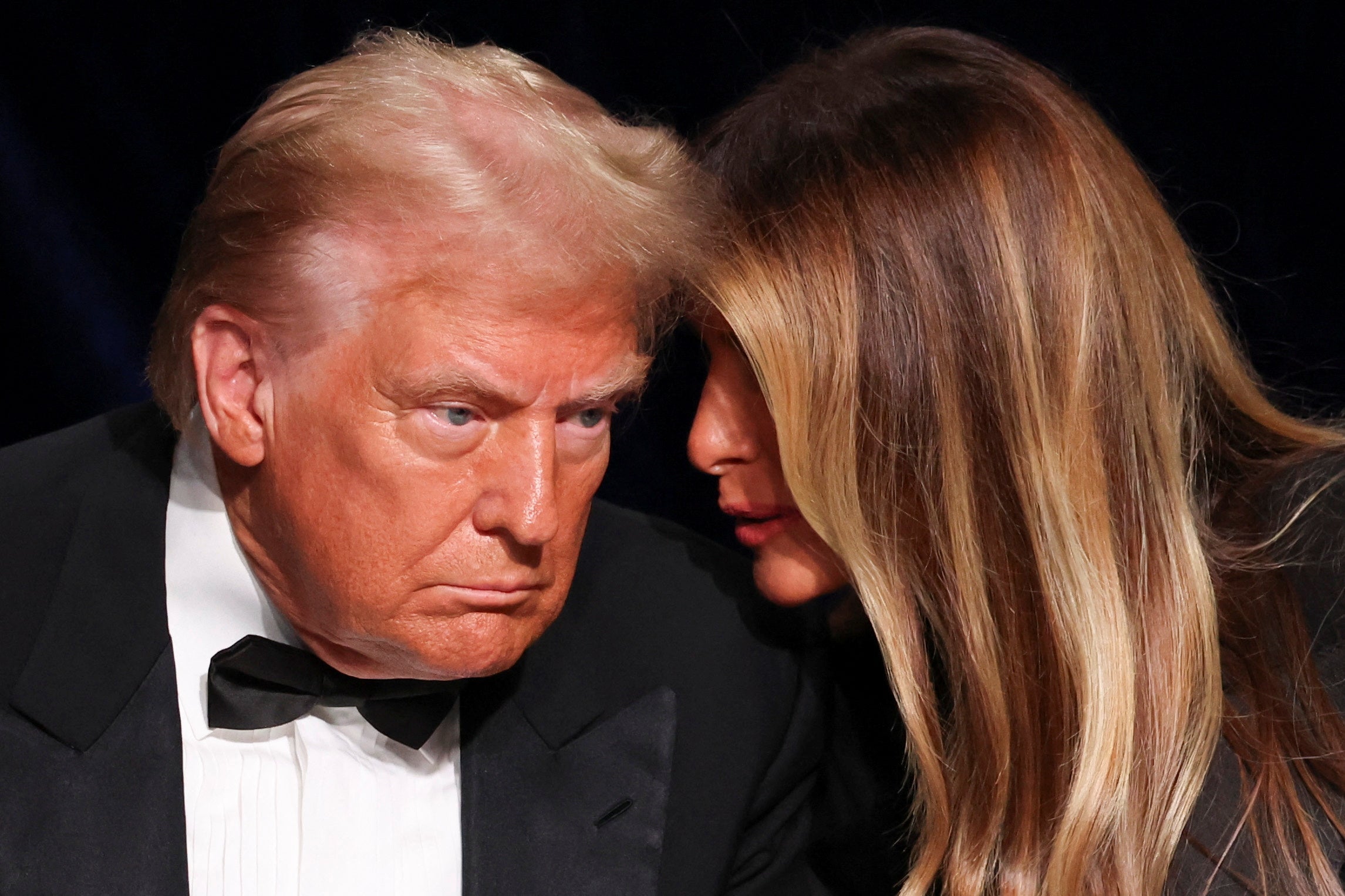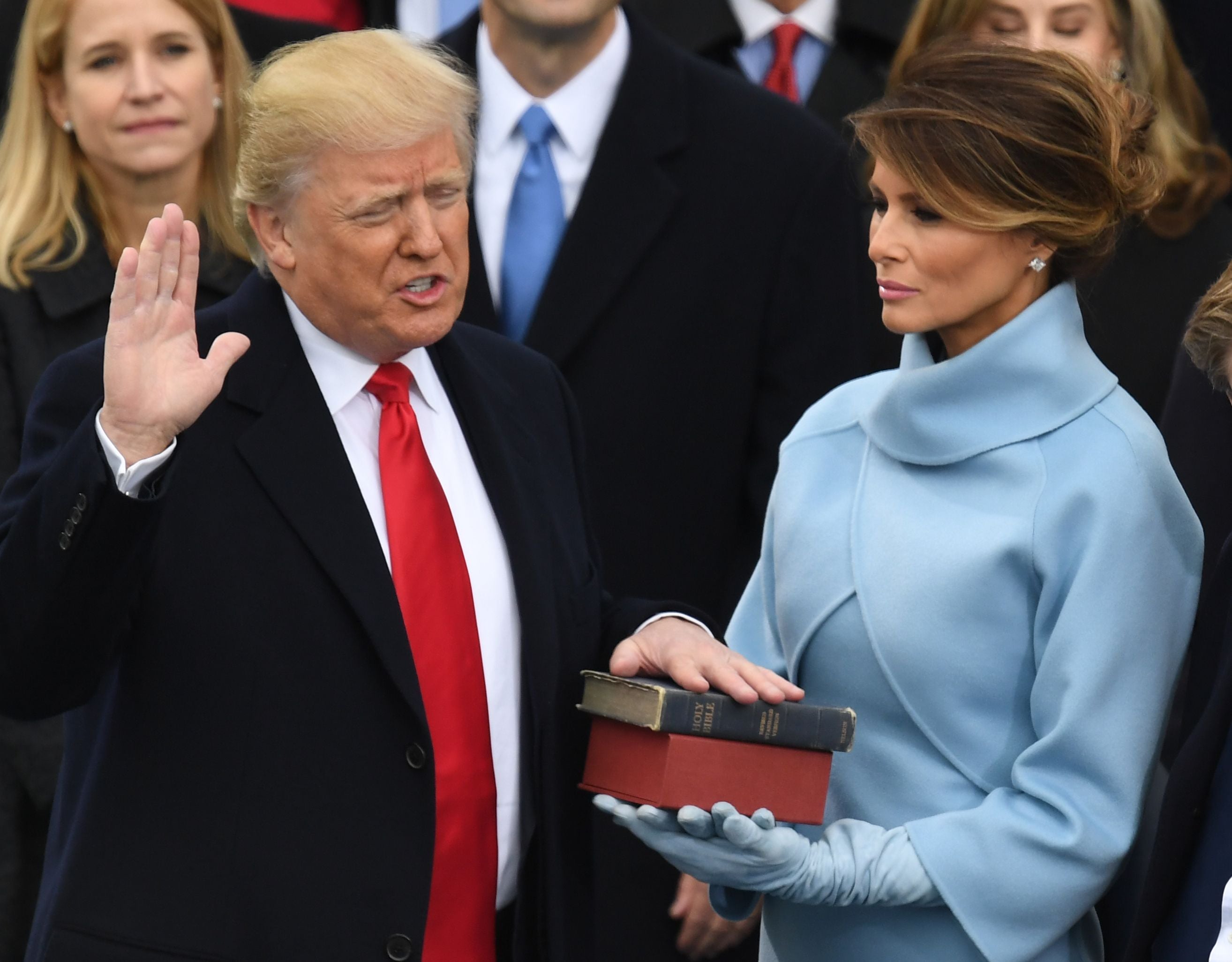Can the real Melania Trump please stand up? What her memoir does (and doesn’t) tell us
She married Donald Trump almost 20 years ago, yet who is the woman behind the blank-faced mask? You won’t find out by reading her autobiography – though there are glimmers of clues beneath the ChatGPT-esque prose, writes Helen Coffey
Your support helps us to tell the story
From reproductive rights to climate change to Big Tech, The Independent is on the ground when the story is developing. Whether it's investigating the financials of Elon Musk's pro-Trump PAC or producing our latest documentary, 'The A Word', which shines a light on the American women fighting for reproductive rights, we know how important it is to parse out the facts from the messaging.
At such a critical moment in US history, we need reporters on the ground. Your donation allows us to keep sending journalists to speak to both sides of the story.
The Independent is trusted by Americans across the entire political spectrum. And unlike many other quality news outlets, we choose not to lock Americans out of our reporting and analysis with paywalls. We believe quality journalism should be available to everyone, paid for by those who can afford it.
Your support makes all the difference.It’s a profoundly curious experience to get to the end of a 256-page memoir and feel like you know even less about the subject than before you started reading. But in this respect, Melania – written, apparently, by Melania Trump – delivers in a way that defies the very laws of literature.
The former first lady and wife of Donald Trump has held a unique fascination ever since her husband announced his bid for the presidency in 2015 before being elected the following year. Who was this poised, stiff, silent woman, 24 years his junior? What did she think or feel or want behind the perfect, blank-faced mask?
Did the Slovenian former model disagree with her spouse’s inflammatory rhetoric? Did she secretly roll her eyes at his unhinged Twitter rants in ALL CAPS? Did she, as speculated in the calls to #FreeMelania, feel trapped in a loveless marriage of convenience – swatting away Donald’s hand during public engagements because she couldn’t bear to physically touch him? On these last three counts, the answer is a resounding “no” if her new autobiography is to be believed. On almost all other points, however, the answer is a resounding question mark. Trying to glean much more about the mystery figure who has stood by one of the most divisive men on the planet for nearly 20 years is like trying to nail mist to the wall.
“As a private person who has often been the subject of public scrutiny and misrepresentation, I feel a responsibility to set the record straight and to provide the actual account of my experiences,” reads the book’s introduction. But “accounts” are all we get, written in prose that, though grammatically faultless, is nothing short of extraordinary in its woodenness. Any sense of personality – should one exist – remains maddeningly opaque.
It is, in its own way, an impressive feat: to get through an entire book about yourself and leave no impression other than of a character vacuum. When talking about her time in the White House, for example, Melania dedicates a bewildering number of pages – and tedious level of detail – to the renovations she completed on various state rooms during her tenancy.
And yet there are glimmers of… perhaps… something hidden beneath the carefully curated anecdotes; mere hints of whispers of clues that a particularly diligent PI might just about be able to piece together to form some conclusions.
We start with Melania’s entry into the US back in 1996, when she flew to New York “to test my skills in the American modelling market… after weighing all the professional and personal implications”. (Many of the sentences read like this – as if the entire book were a particularly humourless extended LinkedIn post, or an attempt to answer a series of competency-based interview questions.)

A pattern soon starts to emerge through each of the chapters that chart a peculiarly non-linear tour through Melania’s life. It seems very, very important that the reader be left in no doubt as to her ongoing success from birth to the present day – and that anything approaching a failure was always, always somebody else’s fault.
The chapter that might have actually revealed some interesting insight into the human being behind the Trump PR machine – one that depicts her childhood and family life in then-Communist Yugoslavia, pre-Donald, pre-modelling, pre-US – amounts to little more than a charmless list of accomplishments on the part of everyone involved. No one could have had a more idyllic, blessed childhood in the history of humankind; no family could have been more practically perfect in every way.
Melania Knauss, as was, was “a joyful and contented baby”, before growing into “a hard worker” who “was always striving for the best”. It’s hard not to find yourself questioning whether she is replicant or human, in fact, with lines such as: “As a child, I demonstrated a strong sense of organisation, orderliness, and methodical approach in all my projects. I possessed a keen curiosity and diligent work ethic.” The description of her sister, Ines (rarely seen with Melania publicly since the latter’s rise to fame and absent from much of the rest of the book), reads like an exemplary school report card: she “excelled academically with apparent ease showcasing a natural intellect and curiosity about the world around her”. Their late mother, Amalija, was a patternmaker and the “epitome of elegance”, gifted with “innate talent and boundless creativity”; her businessman father Viktor’s “expertise in all things mechanical was unmatched”.
The entire book reads like it could have been written by a Trumpian-inspired ChatGPT
There’s something hauntingly familiar in the world of superlatives in which the book resides. Familiar, because this is the constant hyperbole we became intimately acquainted with during Donald Trump’s tenure as president. It’s the language of the narcissist; everything is the “best”, the “worst”, the “strongest”, the “smartest”, and nothing in between. Various Donald speeches are pasted in at intervals, reminding us that, for example, under his leadership America’s “economy is perhaps the greatest economy we’ve ever had in the history of our country. We accomplished more than any other president has in the first two and half years of a presidency.” In truth, the entire book reads like it could have been written by a Trumpian-inspired ChatGPT – but perhaps this is simply indicative of the kind of person it takes to be married to the former Apprentice star for two decades.
But I digress; back to the “real” Melania. She was spotted by a photographer at the age of 16 at one of her mother’s fashion shows. An “unremarkable” photoshoot followed, yet she started to book gigs in Slovenia. Modelling competitions came next, with one resulting in a modelling agent in Milan; Melania took the decision to drop out of studying architecture to focus on this shiny new career.
From there, she moved to Italy, then Paris, before touching down in New York. Any hopes that we might find out something juicy about life as a beautiful young woman living in Manhattan in the Nineties, however, are quickly dashed. “While others indulged in a lifestyle of excess, I stayed focused on my goals and ambitions,” reads the depressingly puritanical prose, which makes clear that abstinence and “remaining singularly intent on my career goals” were the order of the day.

The biggest clues lie in what isn’t there. Not a single date, let alone boyfriend is mentioned, including her alleged relationship with a man named Jure Zorcic before she moved to Milan (“This is yet another person trying to use Mrs Trump’s name for publicity. The facts are not accurate,” a Trump spokesperson said in 2016 when Zorc shared his story). Instead, the narrative reads as if Melania remained a vestal virgin until the age of 28 when Donald Trump walked into her life. Or, more precisely, into the Kit Kat Klub, where she was seated in the VIP area. We’re given to understand that she didn’t recognise the real-estate mogul, and only had the vaguest idea of who he was when he said his name – and hey, maybe she didn’t. This was in 1998 – a point by which Donald had become so famous for his rich man-about-town persona that he’d had a cameo role in Home Alone 2: Lost in New York.
What followed was, according to Melania’s account, a courtship and relationship unmarred by a single roadblock. While she acknowledges that they don’t “align” on everything, Melania is careful to keep things vague – there is nothing even close to reproach expressed about any of her husband’s actions or beliefs. As you might expect by now, there’s no real insight into their marriage, but snippets here and there allude to a relationship in which traditional gender roles are strictly adhered to. For all that Melania expresses ad nauseam that she is an “independent” woman forging her own career (if you don’t already know about her hugely in-demand range of QVC jewellery, get to know), her words often tell of a different dynamic.

“I took pleasure in cooking for him, supporting him in his daily routines, and maintaining a beautiful home. It was my priority to safeguard his welfare, meticulously attending to every aspect of his life,” she says of Donald; when it came to their wedding day, he “expressed his confidence in my abilities and jokingly mentioned that he would simply show up when I instructed him to”. It’s unclear how much of a “joke” this really was.
And then there are the hints at behaviour that genuinely sounds controlling, though Melania never frames it as such: “Donald to this day calls my personal doctor to check on my health, to ensure that I am OK and that they are taking perfect care of me.” (What Hippocratic oath?)
Much of the book is used to address past media foul-ups and snafus, notable for the staggering lack of anything approaching accountability – a hubris unmatched by anyone other than Donald Trump himself. That time she plagiarised Michelle Obama’s speech? Her team’s fault. That time she famously wore a jacket with the words “I really don’t care, do you?” emblazoned on it during a visit to migrant children kept in detention centres? Her press officer’s fault. That time rioters were breaking into the Capitol in an attempt to overthrow democracy and she failed to say anything at all? Her chief of staff’s fault. Melania remained completely unaware of what was going on outside, you see: “Had I been fully informed of all the details, naturally, I would have immediately denounced the violence that occurred at the Capitol Building.”
It’s when sniffing out more of what could actually be described as humanoid emotions that we start to get a sense of the things that might matter to Melania, deep down
At times it feels like the entire book is merely an exercise in score-settling, a vehicle through which to name and shame anyone who’s ever dared to wrong her. A needlessly long anecdote, for example, about a Melania skincare line that never came to fruition is written about with a cold fury that suggests there are perhaps some feelings beneath the robotic exterior. And it’s when sniffing out more of what could actually be described as humanoid emotions that we start to get a sense of the things that might matter to Melania, deep down. Her now 18-year-old son, Barron, for one; her mother for another. Passages about both are the closest the book ever comes to feeling like it was written by a real-life person rather than an AI fed with a Wikipedia page and an over-inflated sense of self-importance. This is particularly true when writing of her mother’s death: “There is an unparalleled sorrow in losing a mother, a profound heartache that shatters the spirit into fragments.”

And something close to empathy stirs when Melania shares that becoming a mother profoundly changed her, and expresses the anger and protectiveness she felt when her son, just a child during Donald’s previous election campaign, was bullied online. Media personalities used their platforms to analyse footage and publicly speculate as to whether Barron had autism – despicable behaviour and treatment that absolutely no one, least of all a blameless 10-year-old, deserves.
Amid the banal and these briefest glimpses of possible authenticity are Melania’s ideological stances, often unceremoniously shoehorned in, apropos of nothing. Some are unsurprising, if disappointing – an unnecessary and dispiriting few paragraphs denounce trans women in sport, for example – and some less so. “It is imperative to guarantee that women have autonomy in deciding their preference of having children, based on their own convictions, free from any intervention or pressure from the government,” she writes in a show of unflinching support for abortion rights. “Why should anyone other than the woman herself have the power to determine what she does with her own body?”
It’s an undeniably strong and courageous stance for the wife of a Republican presidential candidate to take, particularly during an election campaign. But where were these words when they were most needed – when states began to overturn Roe v Wade in 2022, enabled by her husband’s nomination of three Supreme Court justices who voted in favour of revoking nationwide abortion rights? Melania’s support of women’s bodily autonomy conveniently coincides with Donald Trump shifting his own message on the issue, having criticised some anti-abortion laws as being “too harsh” in a bid to win over more women voters.
Who is Melania Trump? After reading her book, I’m none the wiser. But, having read her book, I’m also happy to leave this particular mystery unsolved.

Join our commenting forum
Join thought-provoking conversations, follow other Independent readers and see their replies
Comments